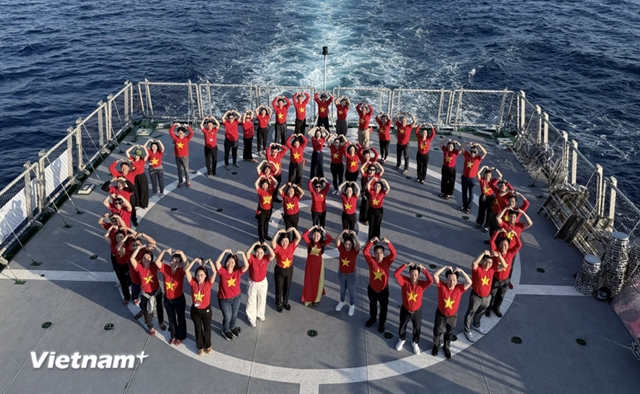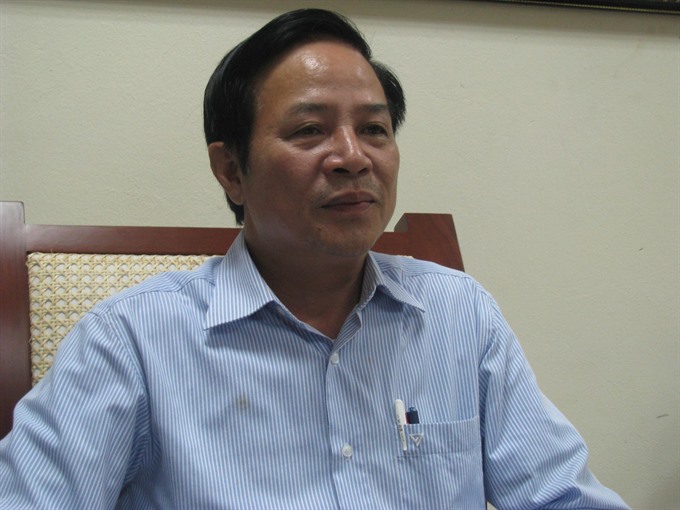 Opinion
Opinion

Hoàng Thanh Vân, head of the Department of Animal Husbandry under the Ministry of Agriculture and Rural Development, talks to Việt Nam News about 2016 results.
 |
Hoàng Thanh Vân, head of the Department of Animal Husbandry under the Ministry of Agriculture and Rural Development, talks to Việt Nam News about 2016 results.
Can you tell us about the achievements of the animal husbandry sector in the year 2016?
The year 2016 has recorded positive changes in livestock restructuring towards greater added value, in accordance with the orientation and restructuring plans of livestock which we have been implementing.
First, this is the first time the livestock industry has reached its highest level over the past 10 years with over 6 per cent growth.
Second, there has been a breakthrough in creating a livestock breed this year. Now we are capable of developing enough breeds for production. Apart from animal breeds, the country can create various kinds of poultry breeds.
Third, a linkage between enterprises, breeders and outlet has been established, particularly in Hà Nội and HCM City.
Fourth, the animal husbandry sector is using modern imported technologies.
A number of enterprises such as TH True Milk Corporation, Dabaco, a group which specialises in producing animal feed and livestock breed, has applied high technology in management.
Thanks to the application of modern technologies, Việt Nam ranks first in the Association of Southeast Asian Nations (ASEAN) in productivity for poultry breeding with between 70 million and 90 million broods a year. Breeders have also begun to pay attention to food safety.
What will the livestock sector have to do in 2017 to sustain development?
There are three major issues that we need to solve while coping with the challenges of international integration.
The production cost is the first issue we need to deal with.
While the breeding cost of pigs in Việt Nam is lower than that of China and the Republic of Korea, it is still higher than many countries such as Thailand, the United States (US), Canada and France.
The price of poultry in the country also is about 17 per cent higher than that of a lot of countries in the region as well as developed countries.
Branding is the second issue that we must pay attention too.
Most of the countries around the world are known for their traditional brands. For example, with regard to beef, we often hear people mention countries such as Australia, New Zealand, Brazil, or the US, or chicken from Thailand.
It is necessary that all our products should have brands if we want to compete in the region.
Currently in Việt Nam, we have a certain number of trademarks or geographical indications, although they are on a small scale. This is a difficult issue that we need to overcome quickly.
Another challenge is trade and product promotion.
We do not lack rice, meat or milk but in many areas, people still prefer imported rice, meat and milk.
The reason is that we have conducted trade promotion work and advertised the products but due to lack of drastic and adequate measures, it has not brought about the desired results. Thus, we have to do something to solve the problem. In other words, in addition to creating good products, we have to make them popular among many people.
What are the solutions to the difficulties that you have just mentioned?
As per then Prime Minister Nguyễn Tấn Dũng’s recommendations on agricultural restructuring including the livestock breeding sector by 2020, the sector should focus on four main issues.
First, we must pay attention to the livestock breeds.
It is necessary to set up a national breeding source which can supply a good breed suitable to each region or locality, particularly native breeds.
In addition, we should have access to the best breeds from all over the world.
Second, the production management should be renovated, and enterprises should be encouraged to closely link with farmers, cooperatives and farms.
Third, it is necessary to review the management system and apply technology in the area of administrative management.
Fourth, although the number of households engaged in animal husbandry might decrease over the next five years, the sector still plays an important role as a means of livelihood for millions of Vietnamese farmers.
The animal husbandry department has suggested a number of measures enabling breeders to easily access advanced science and technology to improve productivity as well as the quality of their products.
The department will co-ordinate with relevant agencies in the fight against the use of banned substances in the sector. At present, it can be said that it has been stopped.
In the past, the use of antibiotics in animal husbandry was acceptable as it was mixed with animal feed for disease prevention. However, antibiotics will be banned in the future.
With this move, the animal husbandry sector has been gradually changing towards a cleaner and safer sector. Animal breeding without the use of antibiotics will be challenging for breeders but they have no choice as complying with food safety and biosafety regulations is indispensable. — VNS




